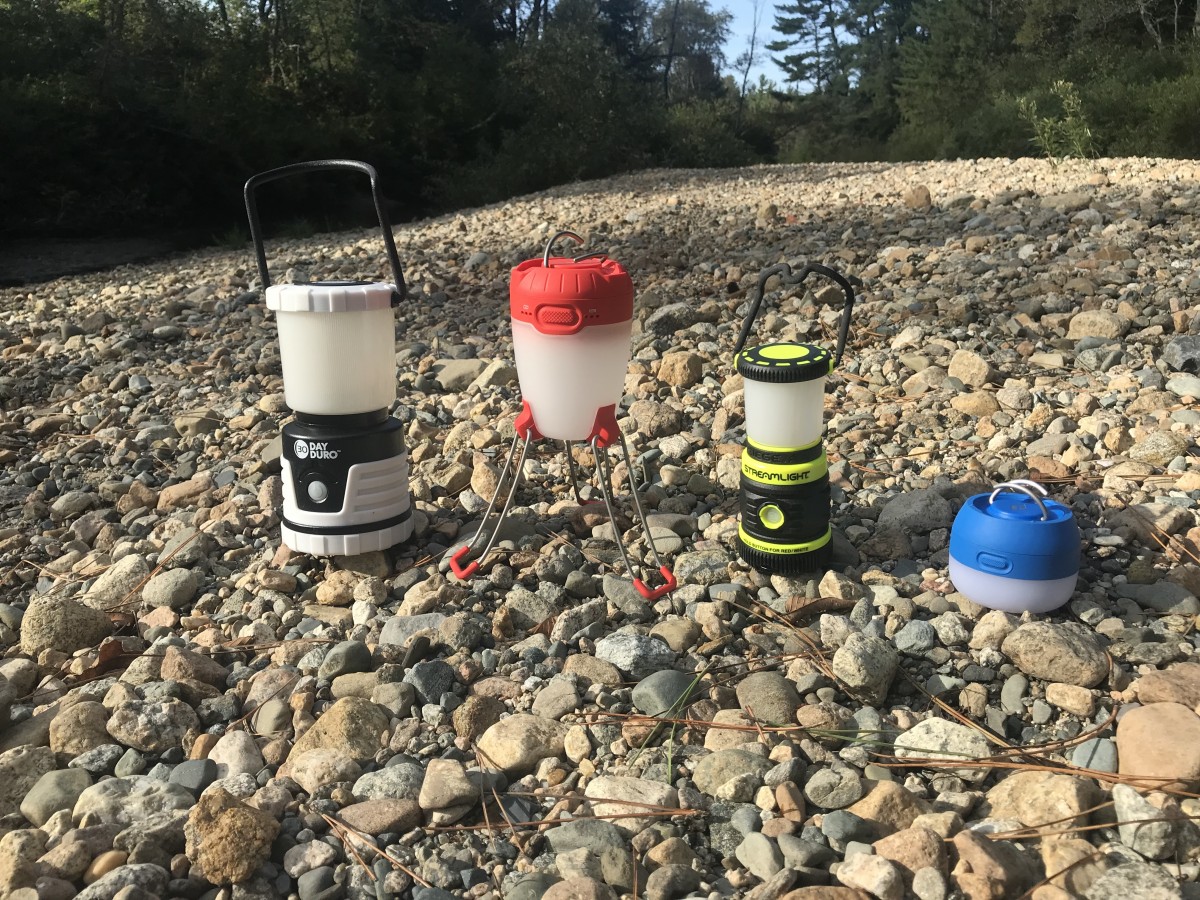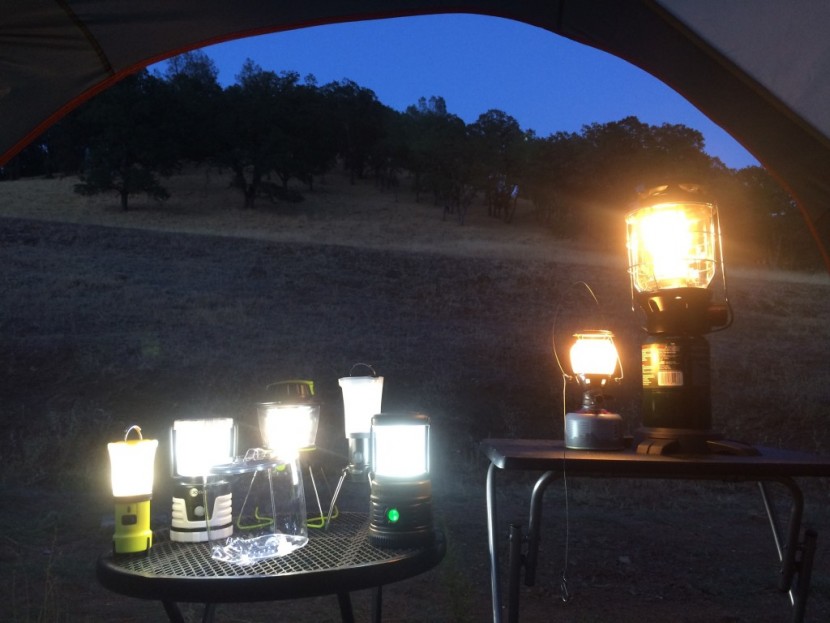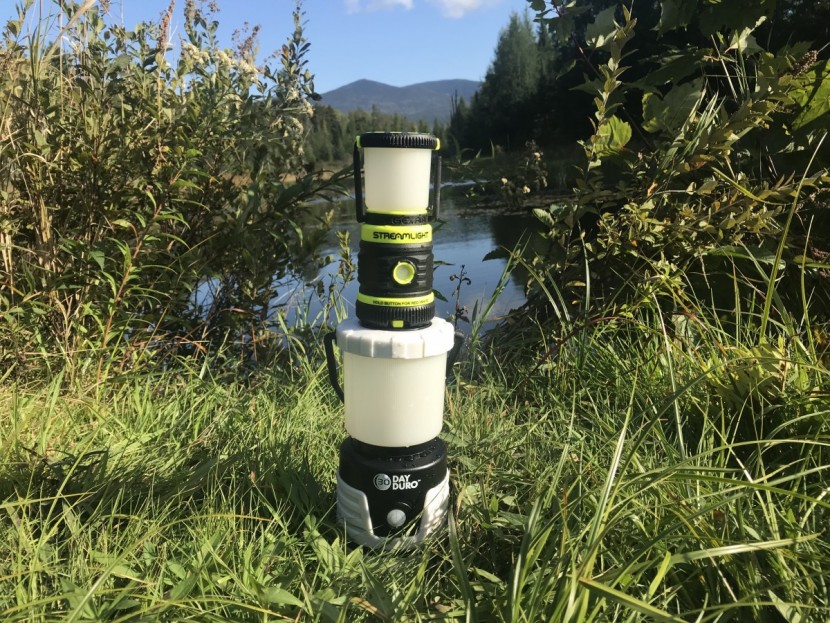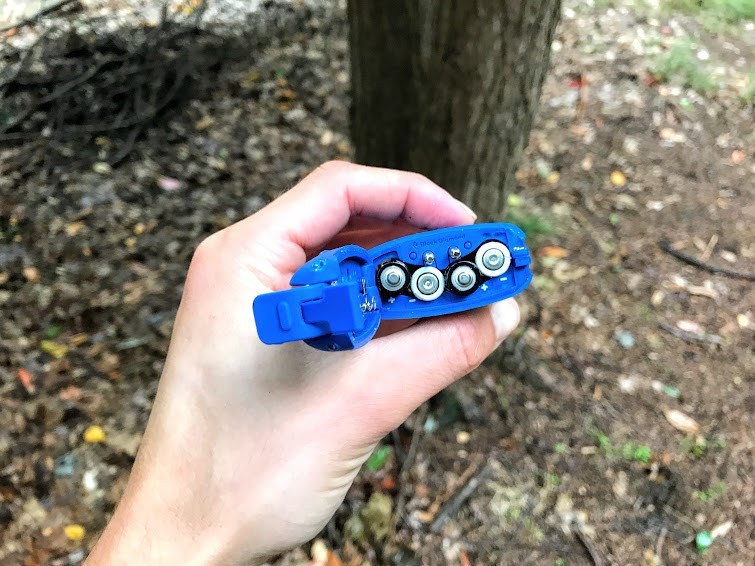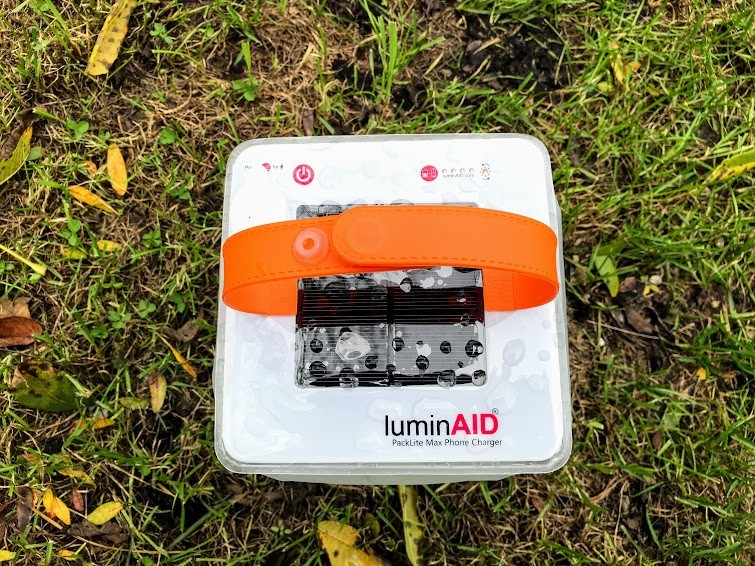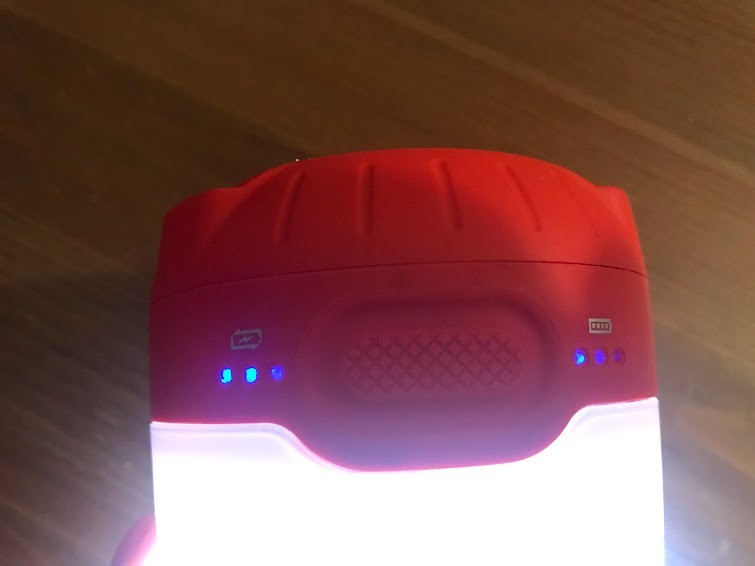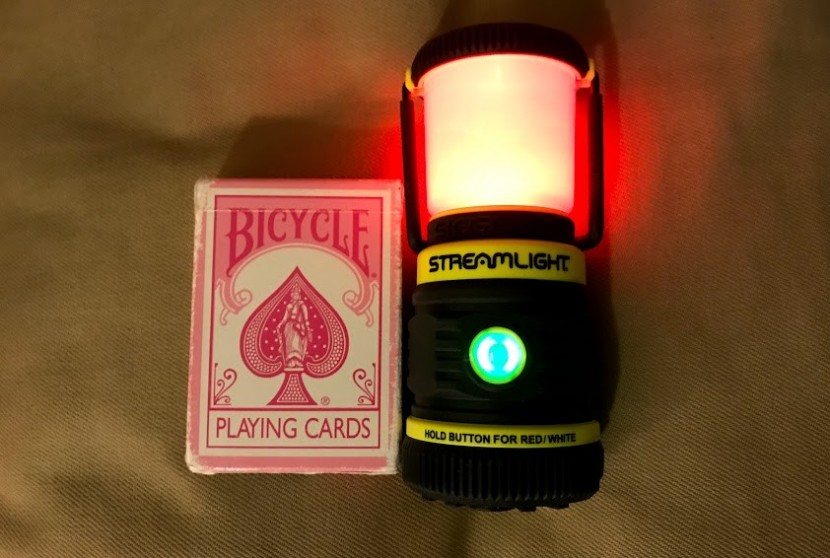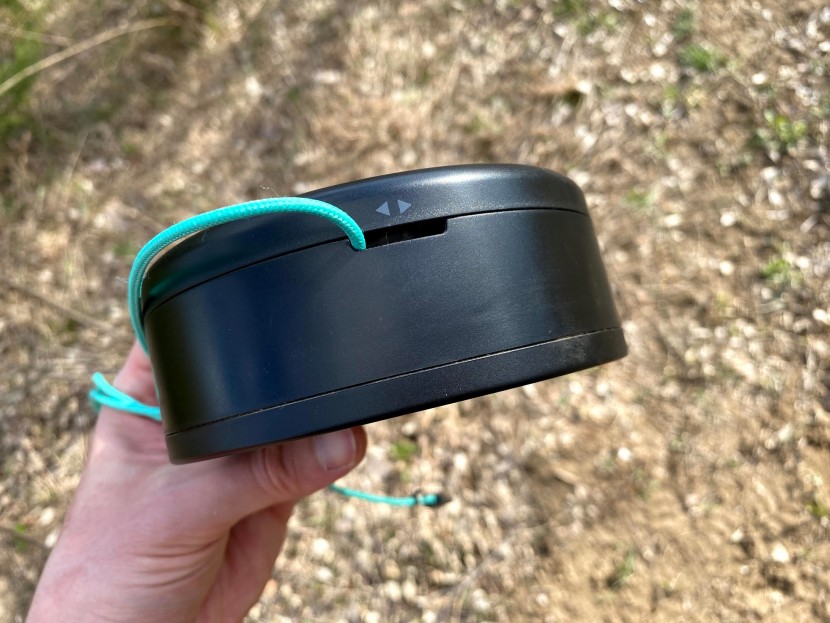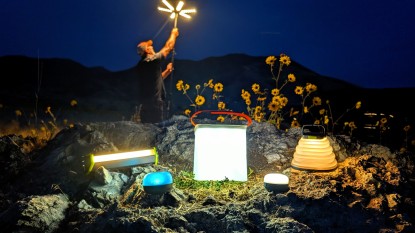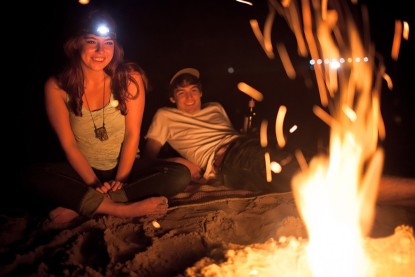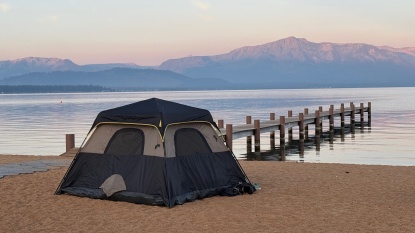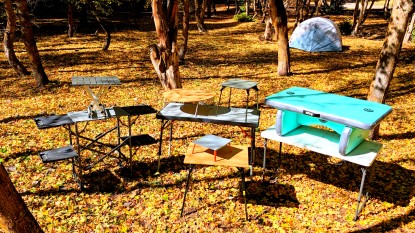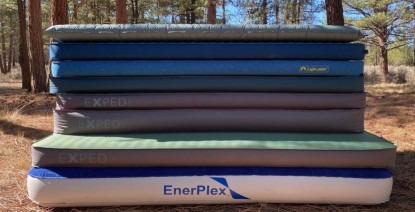Lanterns have exploded in popularity in recent years. From different styles (traditional tabletop; string lights; inflatable; hybrid lantern/flashlight) to power sources (fuel; disposable battery; solar power; USB charge) and features (glow-in-the-dark; phone charger; colors), there is just a lot to sort through. In this article, we will walk through the most important things to consider before making a purchase.
Headlamp or Lantern?
If you are reading this article, we assume that you are at least considering buying a lantern. Lanterns are great for illuminating an area for a larger group. Whether car-camping, grilling in the backyard or lighting up a room when the power goes out, lanterns tend to make for much better-centralized light sources than headlamps. They typically provide a wide, 360-degree shine radius, allowing many people to benefit from them at the same time.
Headlamps, on the other hand, are great for individual use. If you will primarily be by yourself on your outdoor adventures or need to stay hands-free, say, for hiking at night, a good, bright headlamp is the way to go. If you will be spending more time with friends and family, or you like your dose of nature to come with a few more of the creature comforts of home, then you should consider a lantern for your next outing.
Where will you use your lantern?
If you are still on board, knowing where and how you will use the light will narrow down your options considerably. Companies design their products weighing certain features against others to create models that are meant for a particular use.
Types
There are a variety of lanterns out there that roughly fall into three categories based on their intended primary use: emergency use/supplemental power outage lighting, front-country camping, and backcountry camping. We outline the top considerations for each use below, keeping in mind that many lights are great for more than one purpose.
Emergency Use/Power Outages
For power outages, battery life and ease of operation are essential. Models with disposable batteries offer the most psychological safety, so long as you know you have a stash of the right type of battery. Solar-powered lights can be a real lifesaver if you experience an extended outage and you are able to recharge the light during the day (just be sure to test/charge it periodically if it is stored in a closed bin or closet). You may also opt for a model that has USB charge ports, so you can keep a phone charged in case of emergency. These ports greatly improve the versatility of models that have them because they essentially become a reserve battery as well as a light.
For at-home power outages, weight is much less of a concern than with other uses. In fact, as a general rule, heavier models tend to be brighter as well. If you're looking for a single, central light source, bulkier may be better.
Frontcountry/Car Camping
Frontcountry camping lanterns can also be on the heavier side, but it's important to consider exactly what you hope to get out of your light. If brightness is your primary consideration, isobutane-powered models tend to have the highest lumen output, but they also require more effort to get going, may require maintenance (replacing mantles, cleaning, etc.), and can be loud. If you and a bunch of friends are going out in the RV on summer vacation, you may want to consider a variety of smaller, party-friendly lights that can hang overhead.
Camping string lights are a great option if you are planning to spend multiple days base camping and/or are looking for a consistent, bright option to surround an eating area like a picnic table.
Electric vs. Fuel-Powered
Some lanterns run on propane or isobutane canisters instead of batteries or solar power. Some benefits of the fuel-powered version are they burn bright, they do not require electricity, and they emit heat. One element of fuel canister models that many folks find to be especially attractive is that they use the same propane canisters as larger portable grills or the same isobutane canisters as compact backpacking stoves. The downsides are that they cannot be used indoors or in tents, they need to be lit, and the mantles cannot get wet.
Backcountry Camping
If you are planning to take a lantern deeper into the backcountry, then “lighter is better” generally holds true. We would recommend looking at hybrid lantern options that incorporate a flashlight for individual use. Another primary reason to forgo a headlamp in this situation may be because a lantern offers novel features that are helpful when you don't have easy or consistent access to electrical outlets. Lightweight solar-powered models are excellent options to consider here, as well as those that include a USB charge-out port for small devices.
Key Areas of Performance
Once you know how you will be using your lantern, you can consider a variety of different factors to determine which model is the most right for you. Here, we dissect five metrics: brightness, ease of use, durability, features, and weight.
Brightness
A lantern is only as good as the light it projects. Manufacturers print the lumen output of a product on the packaging. A lumen is a unit of measure that describes the amount of visible light that an object emits. For the most part, the greater the lumen rating, the brighter the light will be (perceptions of brightness can also be impacted by specific features of the lantern, including diffusing covers or light directionality).
You can roughly determine the lumen output you will need based on the intended use and group size. Small groups of 2-3 people can get by on 100 lumens or less (think about the amount of light you would want in a tent at night to read or play cards. Larger groups may require a brighter light of 200 lumens or more. LED lanterns tend to range from about 50-700 lumens, whereas commercial isobutane canister lanterns can push 2000 lumens.
Battery Life
Based on the activity you intend to use the lantern for, you should research its runtime. Or in other words, how much time does it take for the lantern to go through batteries? Of course, this is battery-type-dependent, but most companies usually give an over-exaggerated time. Some of the lanterns we tested will only run for a few hours, while others — particularly those designed for emergency use — can last up to 30 days or more.
Ease of Use
It perhaps goes without saying, but we often need light the most when we don't have it. Maybe it's getting dark, and your gourmet dinner is burning, or maybe there is an animal outside your tent. Either way, fumbling with buttons and hooks is a bummer when you need illumination in a hurry. We recommend models that can be easily hung overhead. Hooks like those on the Black Diamond products that can be placed over a branch or through a tent loop are ideal. When camping, perfectly smooth and level surfaces can be hard to come by unless you have a picnic table at your site. Non-slip rubber bases or rubber-tipped legs make balancing your lantern on rocks and stumps much easier.
Features
Having useful features can set a lantern apart from the others and can significantly boost performance. Basic features common to most models include some type of legs or stable base and a way to hang the light from above, like a hook, loop or carabiner. Whatever you choose, we strongly recommend a product with these features. In addition, different light modes, including colors, pulses, or dimmer settings also have their place. Some lights do double duty as a backup battery pack and include a USB port for charging devices. Whatever you are looking for, we recommend honing in on the features you want and ensuring that those features work well on the products that you are considering.
Weight
If you know you are going to be using your lantern in camp or around the house, heavier can be better. Along with a wide base, some heft and a good low center of gravity will increase stability. If, on the other hand, you are primarily using it in the backcountry or with kids, compact, lightweight models are the way to go.
Durability
Almost as important as performance is a light's longevity. One that can withstand adventures and sticky fingers alike is one worth investing in. Based on our tests, we decided on a few things to look for before purchasing one to ensure that it will serve you well. Does the lantern have lots of extraneous parts that are likely to break? If it does, are they made out of a strong material?
Weather/water resistance is a critical contributing factor to a lantern's durability. A good lantern from a reliable manufacturer will have an Ingress Protection rating somewhere on the packaging with a score represented as IPXX. The first X is a digit that represents how resistant a product is to solid particles (in most cases 1-6 with higher numbers indicating greater resistance to dirt and debris). Many lanterns in our review do not have a precise solid particle rating, so that first number is still shown as an X. The second number represents how water-resistant a product is (usually 1-8 with a higher number being more water-resistant). For example, some models are rated at IPX4. The X means that the manufacturer did not have the product rated against solid dirt and debris resistance. The 4 means that it is protected against water splashing from all directions. In practical terms, it's fine if it ends up in the rain, but it could be problematic if it gets dropped in a lake.
Conclusion
There are a lot of lighting options out there to consider. However, thinking about the primary use of a lantern and the most important features you need it to include should narrow down the possibilities to a model that is just right for you. We hope this article will help you do just that.

